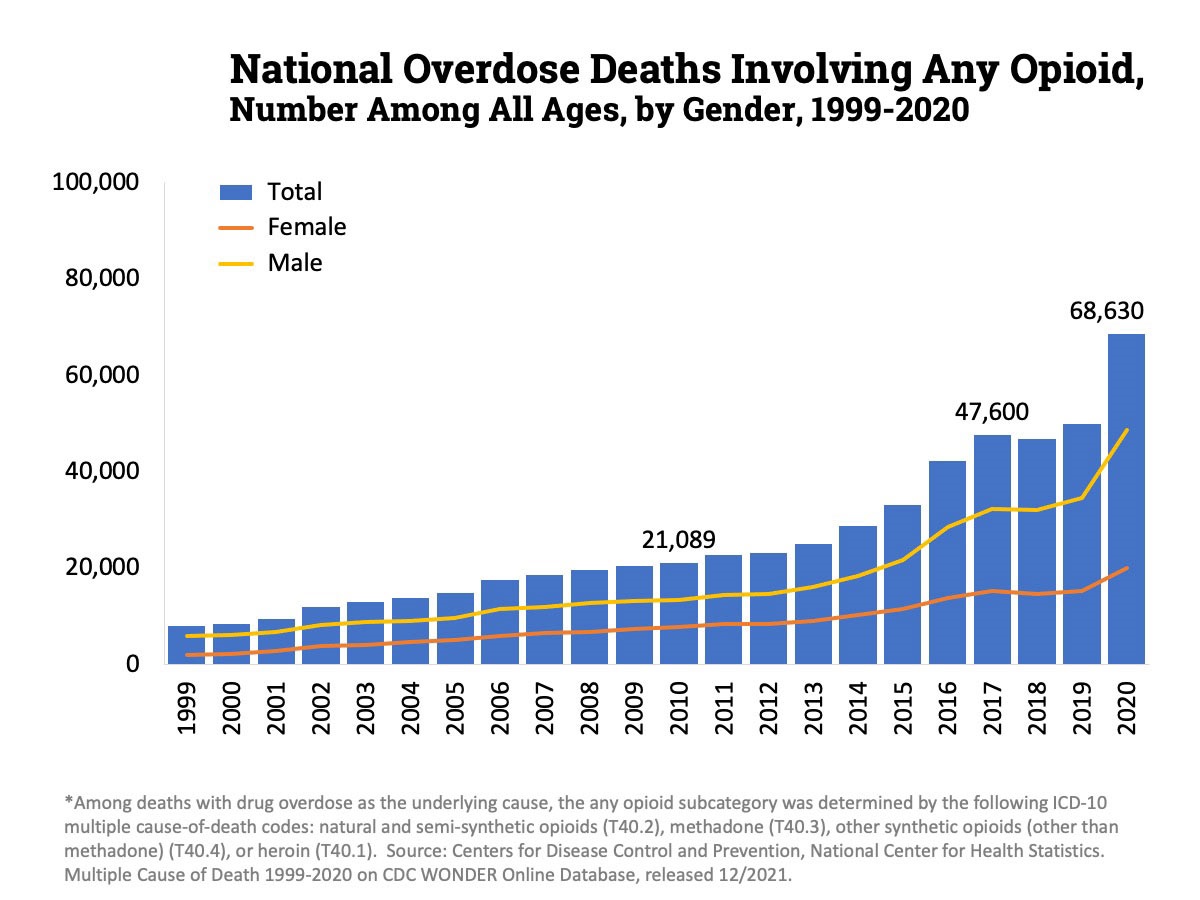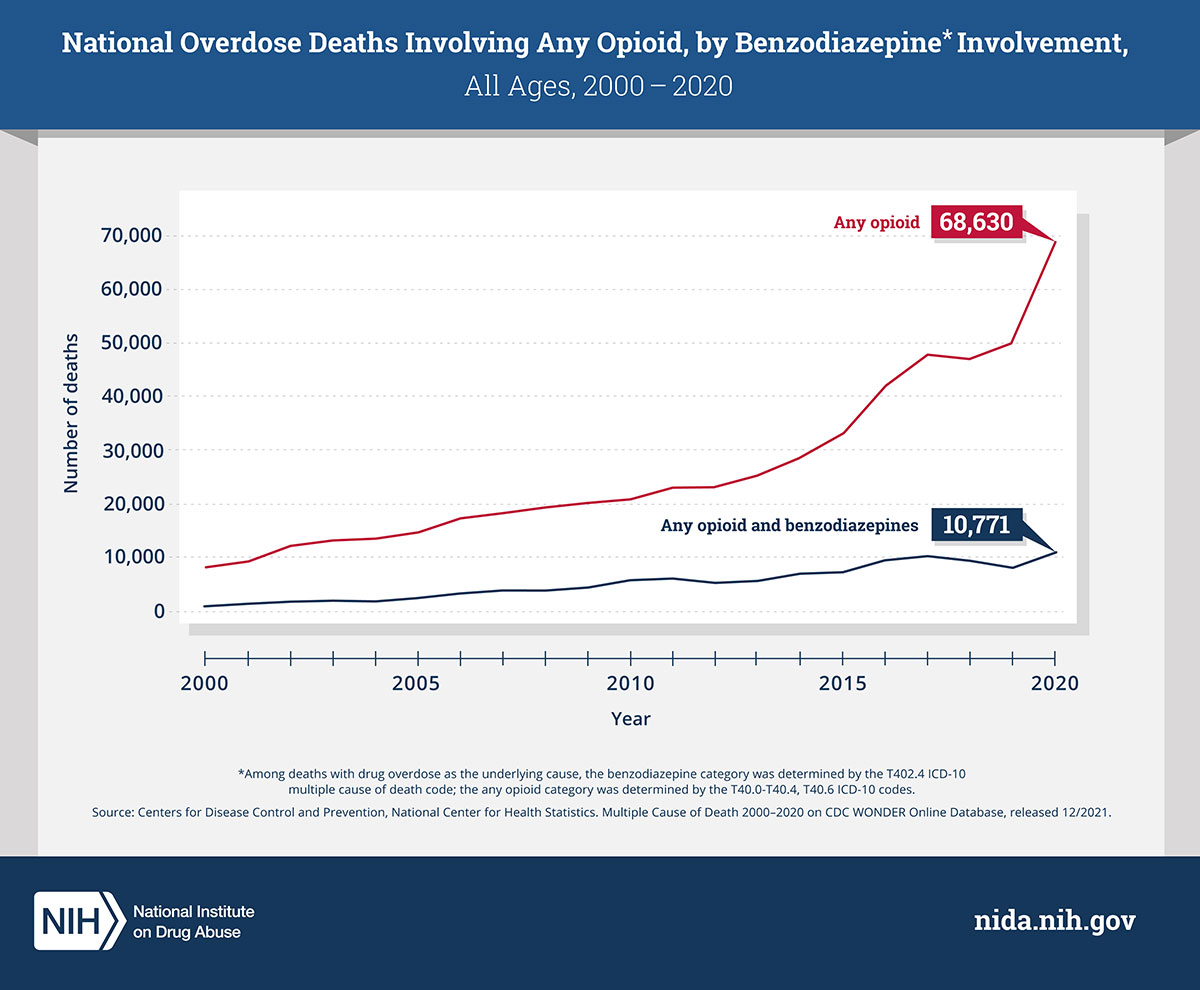The statistics are alarming. According to the Centers for Disease Control and Prevention, since 1999, the number of drug overdose deaths involving opioids has increased five-fold. The pandemic only exacerbated the opioid problem, with a recorded 68,630 deaths in 2020, meaning nearly 200 Americans die every day from opioid use. The numbers indicate a growing problem. But what if the numbers could also provide the solution?

Source: National Institutes of Health, National Institute on Drug Abuse, https://nida.nih.gov/research-topics/trends-statistics/overdose-death-rates
If used correctly, analytics solutions can enable government agencies and healthcare providers to identify trends in the data and help make a difference in the battle against the opioid epidemic. Let’s take a look at how.
Moving from trends to intervention
At the most basic level, an analytics solution can help organizations – from hospitals to health departments – look at trends in opioid use. That means users can examine whether opioid use has increased over several quarters or several years. That information can be broken down by patient, by provider, or by dispenser. A more advanced analytics solution, though, can help users go deeper into the numbers and manipulate the data in a way that can enable interventions instead of just looking at trends.
Most states have some kind of prescription drug monitoring program, but the prescriptions they monitor can vary. If a state is monitoring Schedules II through V, covering all thoroughly controlled substances, it could be dealing with tens of thousands of records per day, and millions of records per year. A key data point is Schedule II opioids, considered to be at the highest risk for misuse or abuse. These include drugs such as opium, morphine, codeine, oxycodone, and fentanyl.
Measuring morphine milligram equivalents
One way to assess risk of misuse or abuse, or even death, is to calculate the average daily MME of drugs and see which patients exceed certain MME thresholds. MME stands for morphine milligram equivalents and it is the standardized measurement used across all opioids, since all opioids are not the same in terms of their strength. According to the CDC, patients who are prescribed more than 50 MME per day increase their risk of overdose by at least two times the risk of those prescribed fewer than 20 MME per day.
Calculating the average daily MME, though, when dealing with tens of thousands of records a day, can be complex. The right analytics solution can take the millions of opioid prescriptions generated and break them down to produce the average daily MMEs per day per patient. And if a certain drug product alters the MME for any reason, the right analytics solution will allow the user to change the formula with exclusion criteria.
How can we use this data?
Some state organizations have used analytics to examine pharmacies to see the volume of opioids they are dispensing. They can also look at the volume of opioids that healthcare providers prescribe. This enables them to spot prescribers whose volume might be far above the rest, or whose volume might not correlate with what is in line with his or her specialty.
In addition, prescribers can look at the data to see what providers prescribe to a patient over a certain period of time – say, one year. Because the data is broken down into MMEs, it provides a standard that prescribers are easily able to understand instead of having to calculate the potency of specific drugs. Providers can also look up whether other providers prescribed benzodiazepines (sedatives such as Valium, Xanax, and Klonopin) to patients. These drugs, when combined with opioids, lead to a higher risk of overdose. In fact, the National Institutes of Health say that in 2020, 16% of all opioid overdoses involved some type of benzodiazepine.

Source: National Institutes of Health, National Institute on Drug Abuse, https://nida.nih.gov/research-topics/opioids/benzodiazepines-opioids
State agencies are also able to look at the data by municipality. This is helpful in terms of identifying areas in the state where there might be a larger opioid problem. Various agencies and healthcare providers can then work in tandem to provide more geographically focused programs in that area.
Strong technology infrastructure required
Of course, when you’re talking about tens of thousands of data points every day – equating to millions per year – you need a strong technology infrastructure to support all of this. That means that an analytics solution needs to be able to process the data quickly and provide fast access to various manipulations of the data. It also needs to be able to handle more complex calculations. For example, there are various ways of calculating MMEs, from simple (weighted average) to more complex (accounting for overlapping days). Finally, the solution needs to be able to integrate data from various data sources and bring it together in a way that it can be easily analyzed and used to make impactful decisions.
Organizations that have successfully implemented analytics to help combat the opioid epidemic are already seeing positive results from their efforts. For example, one state agency that is a Dimensional Insight customer has been able to reduce the number of Schedule II prescriptions in its state by 17% since 2013. However, there is still a lot of work that needs to be done. Analytics can help provide the right insight into trends and concerning data, but it’s up to everyone – government agencies, healthcare providers, pharmacies, patients, community services – to come together to take action to combat this growing and deadly crisis.
- Solving Hospital CEOs’ Pressing Challenges With Analytics - April 15, 2024
- Navigating the Wellness Wave: Wine & Spirits Data Strategy - April 9, 2024
- Takeaways from HIMSS24 - March 26, 2024



